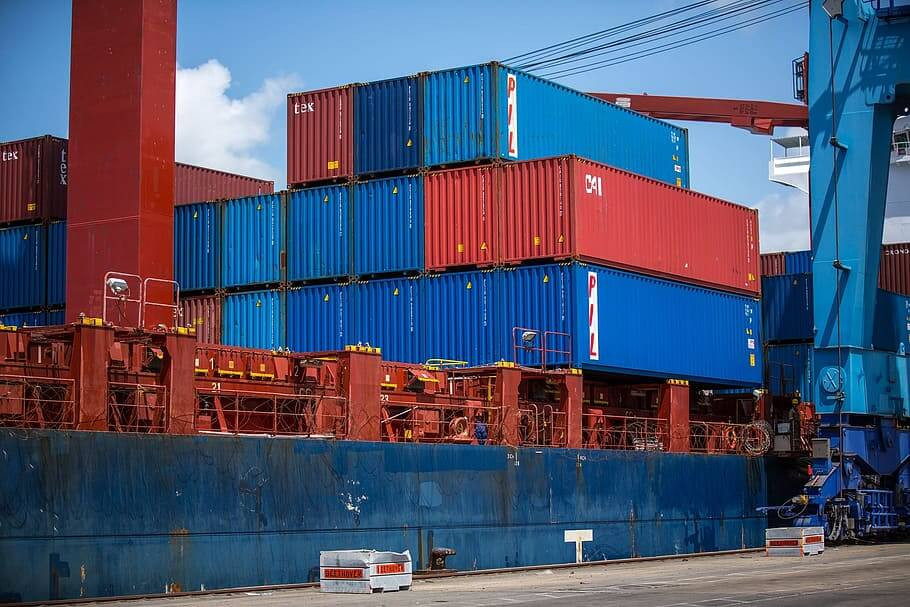Asset Tracking and IoT
| 04-06-2020 | By Robin Mitchell
The ability to integrate internet-enabled technology into almost any devices is opening all industries to the wonders of IoT. This even includes global shipping and tracking, whereby smart sensors and SoCs could see massive benefits to customers who are required to ship sensitive materials or items.
Shipping and Tracking
Many modern industries rely on a global network of manufacturers, designers, and consumers. Global supply chains are only possible thanks to large shipping vessels, cargo planes, and distribution networks that handle the logistics needed to get items from one place on the globe to anywhere else. However, most will, at some point, have experienced a shipment of goods that are either faulty or completely unusable. In these cases, either the original sender of the products is required to upfront replacement cost or the shipping company is held responsible for the damage. Either way, the result is that those requiring the goods have to wait for a replacement which can have significant impacts down the supply chain with late orders and long delays.

However, one situation that can occur is that a part experienced conditions during transportation that would make it ineffective or unusable but show no initial signs of problems. For example, car windshields stored in a cargo container could have been dropped, causing microfractures not visible to the car production facility on arrival. Several months down the line, those cars are found to have manufacturing defects requiring a recall of the products which can have a high cost to the manufacturer or worse, cause an accident making the company liable for the incident.
Introducing IoT Asset Tracking
One technology that is rapidly emerging that aims to solve this problem is IoT Asset tracking. If a cargo container (or even individual products), could be tagged with an IoT device, then the entire journey undertaken by the goods could be monitored. However, global position tracking is only one of the many advantages. If the same tracking system were integrated with a range of basic sensors, including temperature, humidity, and light, then the goods journey would also have environmental metadata. This metadata would inform those receiving the goods if the goods were exposed to heat, humidity, and impacts during shipment.
One example industry that would greatly benefit from such asset tracking would be chemical and pharmaceuticals. Many chemicals and reagents are temperature and humidity sensitive which require strict transportation measures. If the cargo container shipping the goods were left out in the sun for too long and experienced heating, then the IoT asset tracker would detect this and alert the company requiring the products. Thus, a potentially bad batch of chemicals is rejected immediately, which mitigates against damage to the rest of the supply chain. Another example of an industry that would benefit from asset tracking would be grocery stores. Fresh goods that require careful packing and storages requirements can be monitored by the grocers and be given a pay rate dependent on the conditions; fresh foods transported correctly would pay a higher price while those that are not would pay a lower rate.
But what technological requires are needed for asset tracking?
IoT Tech Requirements
An IoT device that is required to be attached to an asset and track has many challenges to overcome. The first is that whatever power source is used must be mobile, and not require replacement or change throughout the journey. As a result, this means that the IoT device must consume as little power as possible, but since the asset could be anywhere, is required to have wireless capabilities. Since many assets would need tracking, the device is required to be cheap, and the physical size of the device must be as small as possible.
Generally, this would sound like an impossible problem, but the advancements in SoC design, mobile technologies, and continuing integration of electronics means that this is now a possibility. An example of a device that would be highly suitable for such scenarios would be the Altair ALT1250. This device is designed with asset tracking in mind being able to operate on a single battery for 10 years while offering NB-IoT and 2G capabilities. The small size of the SoC allows for miniature IoT designs while the use of Integrated SIM (iSIM), allows for the SoC to connect to mobile networks without the need for an external SIM card. According to the product page, the device only requires an external battery and antenna to construct an IoT system.
Joint Tracking Venture
The development of the ALT1250 may explain the latest partnership between Altair, Bayer, Vodafone Business, ARM, and Murata who have co-developed a smart label for use in asset tracking. The label, stuck onto goods just like postage stamps, are integrating sensor and IoT capabilities to allow asset tracking of goods. Bayer, a life science company, is looking to use these labels as it deals with pharmaceuticals, crop science, and consumer health, all which can be affected by environmental effects on goods in transport. Able to operate up to three years, the label automatically connects to networks thanks to the use of the integrated iSIM, and when environmental changes are detected, the system triggers an event routine that informs Bayer of the situation with the goods.
Conclusion
Smart labels, integrated SIM cards, and low power IoT technologies will continue to see internet-enabled technologies integrated into more products. Once matured, the technology may even find itself into standard postal services to ensure parcels are not lost as well as items in shops to determine expiry dates. The capabilities of integrated IoT technologies are truly amazing, and won't be long before we see IoT devices in almost all aspects of life.

